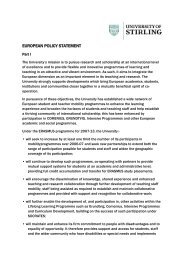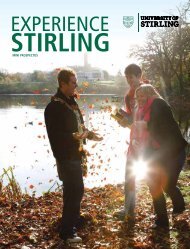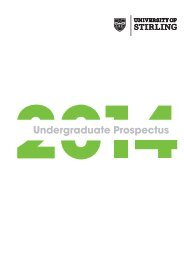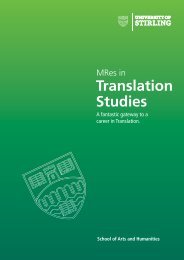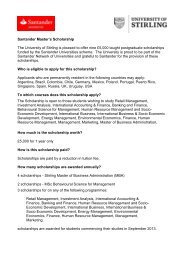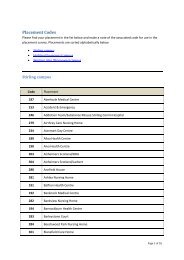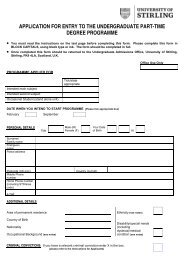Supporting a uK SucceSS Story: The impacT of - Research Councils ...
Supporting a uK SucceSS Story: The impacT of - Research Councils ...
Supporting a uK SucceSS Story: The impacT of - Research Councils ...
Create successful ePaper yourself
Turn your PDF publications into a flip-book with our unique Google optimized e-Paper software.
London 1948 established Olympism’s ability to bring together<br />
people from different nations living in an increasingly divided<br />
world. For Emil Zatopek, the Czech 10,000 metres gold medalist<br />
representing a country which had recently been incorporated into<br />
the Soviet bloc, his world view was transformed by participation<br />
in London 1948. He said: “I went into the Olympic village and<br />
suddenly there were no more frontiers, no more barriers, just the<br />
peoples meeting together.” Pr<strong>of</strong>essor Beck believes this rich history<br />
suggests that London 2012 will help develop the UK’s longstanding<br />
relationship with the Olympic Movement, to rebuild and strengthen<br />
Olympism and to support new directions for Olympism like legacy.<br />
History <strong>of</strong> sports medicine<br />
<strong>The</strong> Olympic and Paralympic Games provide a unique opportunity to examine<br />
athletes and the impact <strong>of</strong> high performance sport on their bodies. Dr Vanessa<br />
Heggie, a Wellcome Trust-funded Teaching Associate at the University <strong>of</strong> Cambridge,<br />
has looked into the history <strong>of</strong> sports medicine and how it has evolved. In her book<br />
‘A History <strong>of</strong> British Sports Medicine’ she highlights that it wasn’t until 1928 when the<br />
Association Internationale Médico-sportive (AIMS), was founded that it was possible<br />
for an international team <strong>of</strong> doctors and scientists to examine athletes. In that year,<br />
two doctors from Manchester, Crighton Bramwell and Reginald Ellis, noticed that<br />
marathon runners had exceptionally stable resting pulse rates, something we now<br />
attribute to the high fitness level the marathon requires. At the time, they suggested<br />
this might be because <strong>of</strong> the phlegmatic temperament <strong>of</strong> the marathoner, compared<br />
to the more ‘highly-strung’ sprinters. It was through examinations like these that the<br />
extraordinary nature <strong>of</strong> the elite athlete became apparent. <strong>The</strong>y have unusually low<br />
resting heart rates, massive lung capacities and phenomenal muscle development.<br />
AIMS still exists to this day, but in 1934 changed its name to the Fédération<br />
Internationale de Médicine Sportive. In 1948 when Britain hosted the Olympics for<br />
a second time in London, rationing was still in place. Athletes were given special<br />
dispensations to consume more calories than the average physical labourer, and<br />
special restaurants were set up to provide the extra food, and so research began into<br />
the effect <strong>of</strong> food on an athlete’s diet.<br />
<strong>The</strong> 1968 Olympic Games took place in Mexico City. At 7,500 feet above sea level this<br />
caused fears about the altitude, with one Gold medal winner Chris Brasher claiming<br />
that some athletes might even die in Mexico. Further research was commissioned<br />
into what effect altitude might have on health and performance. This research found<br />
that some high-pr<strong>of</strong>ile events might actually be positively affected, as the lower air<br />
resistance improved performances. However, the research also found that endurance<br />
events would be negatively affected by the lower oxygen partial pressure in Mexico<br />
City. With increasing security at the Olympic Games, it has become far less common<br />
for research to take place at the Games themselves. However, the events have<br />
continued to provide the inspiration for thousands <strong>of</strong> clinical and scientific studies,<br />
which have has an impact on medicine much wider than just within sport.<br />
SECTION FIVE : THE GAMES: past, present and future 53





